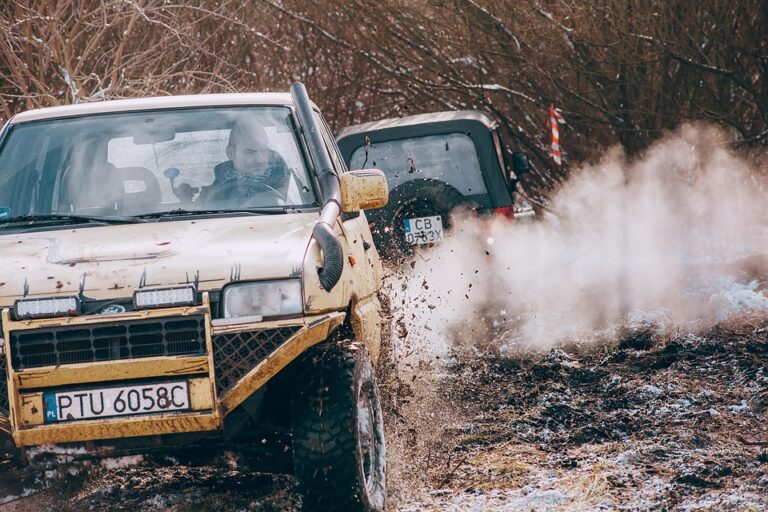The Ultimate Guide to Off-Roading: Tips and Tricks for Beginners
Off-roading provides enthusiasts with exhilarating experiences that connect them with nature while catering to their adventurous spirit. For beginners venturing into this thrilling hobby, it’s important to understand the essentials of operating off-road vehicles. Here’s a comprehensive guide filled with actionable tips and tricks to ensure your off-roading journey is both enjoyable and safe.
Understanding Off-Road Vehicles
Before hitting the trails, it’s vital to understand what makes a vehicle suitable for off-roading. Off-road vehicles differ significantly from standard cars, designed to maneuver over rough terrains such as rocks, mud, and steep inclines. Popular examples include:
- SUVs: Often come with both high ground clearance and four-wheel drive.
- Trucks: Known for their towing capabilities and rugged builds.
- ATVs & UTVs: Smaller, incredibly agile vehicles meant for traversing tight spaces.
Remember, the type of off-road vehicle you choose should align with the type of trails you plan to explore.
Essential Off-Roading Tips for Beginners
1. Choose the Right Vehicle
When you’re starting, selecting an off-road vehicle that suits your experience level matters significantly. It’s advisable to experiment first with a rental or borrow a friend’s vehicle to gain experience without the commitment of a purchase.
2. Learn Basic Vehicle Maintenance
Maintaining your off-road vehicle is crucial for safety and performance. Familiarize yourself with basic maintenance checks, such as:
- Tire condition: Ensure tires are properly inflated and check for wear.
- Fluid levels: Regularly check the engine oil, coolant, and brake fluid.
- Lights and brakes: Test these before you head out, ensuring they’re operational.
Regular maintenance can prevent breakdowns in remote terrains, where assistance may be hard to find.
3. Master Off-Road Driving Techniques
To navigate challenging landscapes, learn fundamental off-roading driving techniques:
- Use momentum: Instead of stopping on steep hills, maintain a steady speed to avoid being stuck.
- Know when to air down: Reducing tire pressure can increase traction on soft surfaces, such as sand or mud, but be cautious to reinflate afterward.
- Take curves slowly: Sharp inclines can cause rollovers; navigate them with care.
4. Plan Your Route
Always plan your route before setting off. Utilize trail maps and GPS systems designed for off-roading. Knowing the layout of your destination will help you prepare for potential challenges.
5. Bring Essential Gear
What you pack can significantly affect your off-road experience. Here’s a checklist of must-have gear:
- First Aid Kit: Be prepared for minor injuries.
- Recovery Gear: Tow straps, a jack, and traction pads can assist if you get stuck.
- Navigation Tools: GPS, maps, and a compass should be on hand.
- Emergency Supplies: Water, snacks, and blankets, just in case.
Example: Burnout Over Prairie
Imagine driving over a rugged prairie where the terrain may shift unexpectedly. Being unprepared could lead to minor misadventures – such as getting stuck or miscalculating your route. However, with proper planning and essential gear, you can navigate even the most unexpected challenges successfully.
Popular Off-Roading Destinations
National parks and off-road parks across the country have some of the best trails.
- Moab, Utah: Known for its stunning red rock formations and challenging trails.
- Rubicon Trail, California: Famous for its off-road challenges and breathtaking scenery.
According to a survey by the Specialty Equipment Market Association (SEMA), off-roading has seen a growth rate of about 12% per year, indicating a surging interest in adventure-driven activities with off-road vehicles.
Safety First
Every off-roader must prioritize safety by:
- Wearing seatbelts at all times.
- Never driving alone: Always have a fellow enthusiast accompany you.
Statistics reveal that nearly 90% of off-road incidents could be avoided with proper planning and awareness.
Conclusion
Off-roading can be one of the most rewarding pastimes for outdoor lovers and adventure seekers. By understanding the intricacies of off-road vehicles, mastering driving techniques, and prioritizing safety, you can ensure memorable and thrilling experiences.
For more tips, check out our articles on Vehicle Maintenance for Adventurers and Essential Safety Gear for Off-Roading. Also, refer to Off-Roading Essentials from the National Off-Highway Vehicle Conservation Council for additional resources.
Images Suggested:
-
Image of an off-road vehicle navigating a rocky trail.
- Alt text: Off-road vehicle conquering rocky terrain.
- Image of a well-equipped off-road vehicle at a scenic overlook.
- Alt text: Off-road vehicle at scenic overlook, ready for adventure.
Embarking on your off-roading adventure is not just about the thrill; it’s about being prepared, educated, and fully equipped to enjoy everything nature has to offer!


